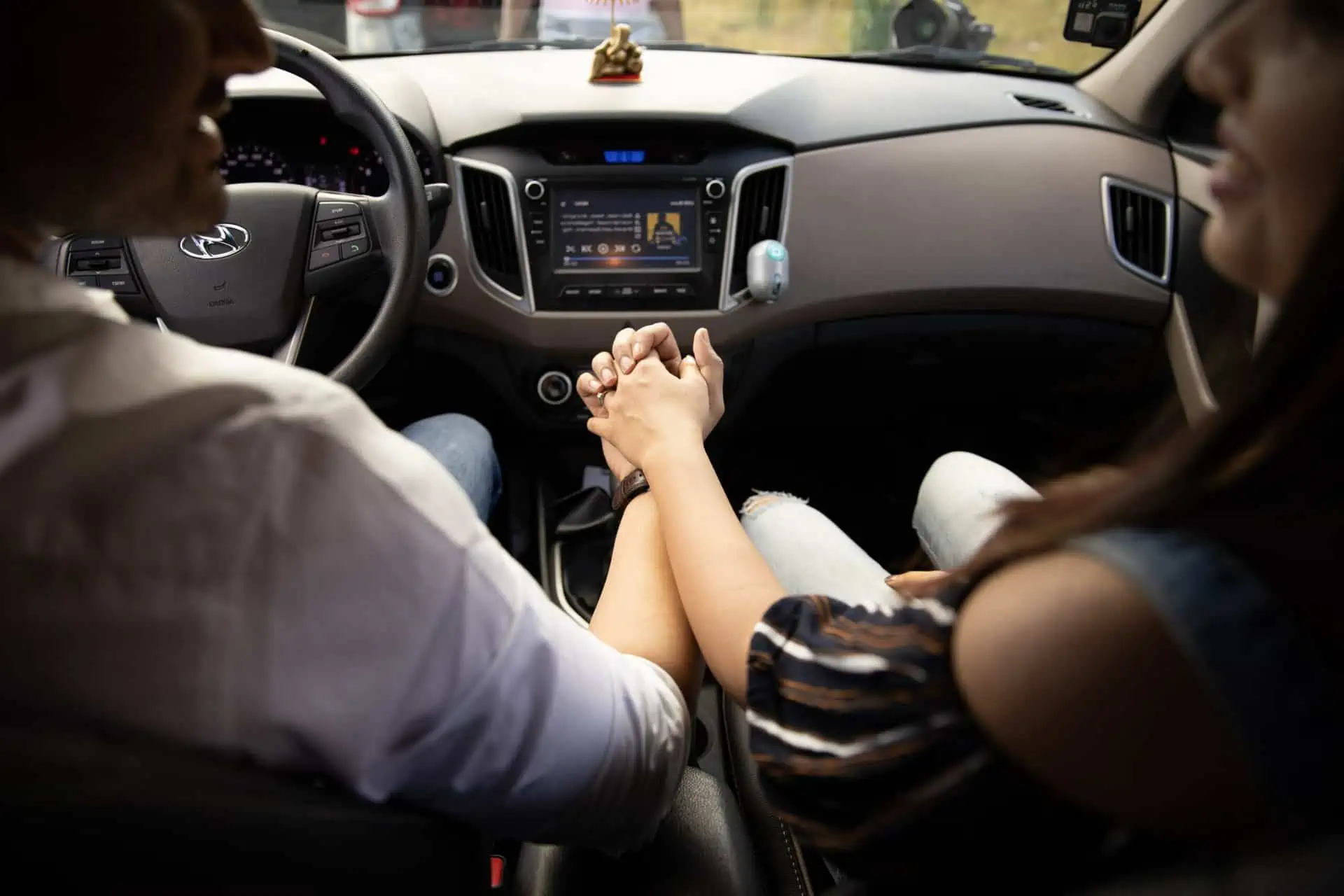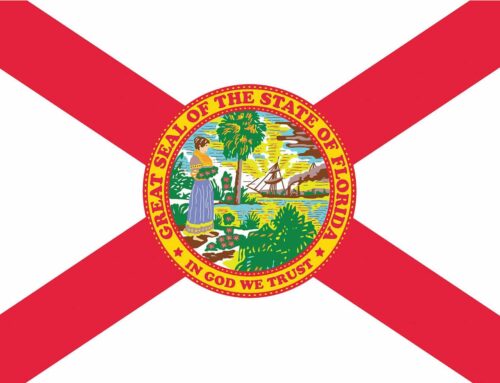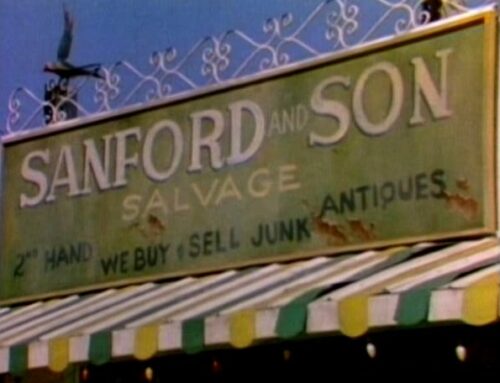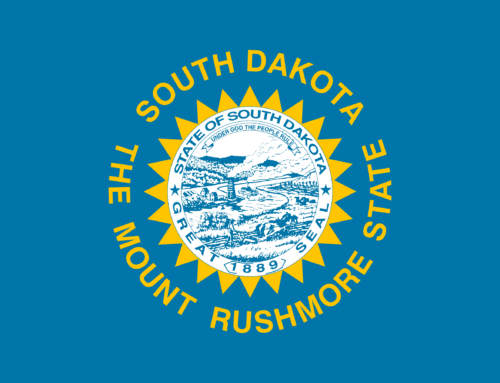Getting insurance for a new car right off the dealership lot isn’t difficult. It’s usually easier than getting the financing! But there are some things you should understand, so you can be sure you have the appropriate insurance protection, you’re honoring the terms of your financing, and you’re in compliance with the law.
First, the good news: If you had car insurance when you drove your trade-in onto the lot, you’ll have car insurance when you drive your new car off the lot.
You might take a depreciation hit the minute you pull out of the dealership, But that’s life with brand new cars. They go from “new” to “used” in the blink of an eye!
You don’t have to do anything: Usually, the dealer just needs to see proof of insurance before they hand you the keys. They don’t care what the amount is. The finance company will care, but not the dealer. Your old insurance coverage will transfer to your brand new car for a limited period of time – typically from a week to a month grace period.
The catch: You’ll only have the amount of coverage you had on your old car. Your policy won’t change. But unless you’re actually downgrading in car – which hardly ever happens when people buy new cars – you will have a lot more at risk when you sign the bill of sale on your new car.
You will almost certainly need to upgrade your insurance coverage to match the increased value of your vehicle.
New Car Insurance and Vehicle Financing
Now, if you paid cash to own your new vehicle outright, it’s a good idea to add collision and comprehensive coverage to match the value of the car.
That way, if you total your car tomorrow, or if it gets stolen or destroyed in a flood or a tornado, your insurance policy will pay out the full value of the car – minus the deducible you select. So you can go back to the dealer and buy another new car just like it. And get on with life.
But it’s not mandatory.
If you own the car outright, the only mandatory coverage will be to carry your state’s minimum required liability insurance. Which is far, far too low to protect you or others who share the road with you who could be injured in an accident you’re involved in.
If you own the car outright, then collision and comprehensive coverage is optional. It’s your risk. It’s on you. It’s just a matter of you deciding whether you can afford to take on the risk of “going naked.”
If you total your car tomorrow, can you go back to the dealer and buy a car you’d be just as happy with without blinking an eye? Then maybe collision and comprehensive insurance isn’t a must for you. (You should take the money you save by skipping comprehensive and collision coverage and buy adequate liability insurance and umbrella insurance coverage instead!)
But if you financed the car, you can expect to carry “full coverage.” That is, you’ll need to carry liability insurance, collision, and comprehensive on the car.
The reason: The finance company must protect its own interests!
If something goes wrong with the car, or if it’s damaged, lost, stolen, or destroyed, they expect you to stop making the payments you owe.
They can sue you for the balance. But lawsuits are expensive. And they know that even if they win, they may not be able to collect.
Thats’ why car lenders require their finance customers to maintain collision and comprehensive car insurance coverage:
If the car is totaled (so that the collateral is destroyed), the insurance policy steps in and pays off the loan balance.
Get New Car Insurance Quotes Ahead of Time
When you buy a new car, your insurance premiums will increase, in most cases.
Naturally, you should be aware of your probable insurance rates before you commit to the purchase. You don’t want to commit to a car loan that stretches your budget, only to learn too late that your car loan plus insurance will be too much for your monthly budget to handle.
To prevent getting the “insurance surprise” after you sign the purchase order, it’s a good idea to get some insurance quotes up front before you finalize the purchase.
Try to narrow down your probable purchase to a couple of different models. Then get an independent insurance agent to help you run some quotes from different carriers. Getting quotes is free! And knowing your probable insurance premium can go a long way to helping you and your lender determine what you can afford to buy.
Be sure to include comprehensive and collision coverage in these quotes. Not just liability.
Pick the insurance carrier that gets you the most value.
And when you buy the car, call your agent back, and pay the premium right away, so you can get the insurance in place (before you get a chance to crash the car!)
CLICK HERE to get FREE Pre-purchase Car Insurance Quotes From Multiple Carriers in Your State
New Car GAP Insurance
Unless you’re throwing in a big, hairy down payment, you’ll probably be “upside down” in your car for the first one to three years or so of the car loan. That means you will still owe more on the car loan than your car is worth – a situation finance people call negative equity.
If you’re upside down at the time of an accident, disaster, theft incident, or anything else that results in a total loss, your full coverage car insurance policy will pay – but not enough to cover your loan balance.
The insurance company will send the settlement to your finance company as the primary lienholder. Not to you. If you’re upside down, you won’t get a dime from it. It will all go to reduce your loan balance. And then you’ll still owe the remaining balance on the loan.
This can be a problem, because the old auto loan will still show up on your credit report. And you’ve got to replace your car with no money in hand.
And the old loan hanging on your credit report could make it more difficult to qualify for financing on your next car.
To prevent that circumstance, you might consider GAP insurance. It stands for “General Asset Protection” insurance. But it really does cover the gap between the depreciated value of your car and the balance of the loan.
Your car dealership will be happy to sell you a GAP insurance policy right at the lot.
Too happy.
They’ll even helpfully roll your entire premium into the loan.
That way they get paid twice.
They get paid a commission from the GAP insurance provider. And they get paid a percent or two spread on whatever the amount of premium is they roll into the loan.
GAP insurance is a great product if you need it.
But buying it from the dealer is usually a rip-0ff.
The dealer marks up the real cost of the insurance by 300%, 500%, I’ve even seen 600% and 700% mark-ups over the real wholesale cost of GAP insurance premiums!
And the dealer-sold GAP insurance products are lump sum premiums. They get the entire premium up front. And most of their customers finance the rest over the next 4 to 7 years.
But you’ll only be upside down a year or two! GAP insurance only benefits you for that limited window of time. Even less if you make additional payments to bring down your balance. But if you buy GAP coverage from your dealer, and you roll the cost into your car loan, you’ll be paying for the GAP insurance plus interest for the life of the loan.
Don’t get me wrong: If you would experience a financial hardship if your car gets destroyed in the first year or two of the loan because of negative equity, by all means, buy GAP insurance!
But don’t buy it from the dealer!
Instead, contact an independent car insurance agency (like Select Insurance Group, by the way!) and have an agent price coverage of your new vehicle make, model, and trim, with GAP insurance added.)
We can quickly get you car insurance quotes from as many as a dozen different competing insurance companies. Without flooding your email and telephone with text messages from a. dozen competing companies!
You can get all the quotes from a single point of contact, saving yourself time, hassle, and money!
When you buy GAP directly from a car insurance company, instead of from a dealer, you eliminate the middle man, and a huge layer of costs.
You can also pay for the GAP insurance with a small monthly premium instead of an up-front lump sum.
You’re not financing it, so you save interest.
And best of all, in a year or two, when you’ve paid down your loan balance and you’re no longer upside down, you can make a quick phone call and cancel the GAP coverage!
You can save hundreds of dollars just by doing this!
Note: For the best result, you need to use an independent agency, like Select. Many car insurance agents are “captive.” Meaning that they only work for one insurance company. They can only sell you insurance products from that carrier. They can’t compare quotes from competing companies, and can’t help you save money by switching to another carrier even if they want to.
The chances that they happen to be working for the very best quality carrier with the lowest prices are very low. And if you are a less-than-perfect driver, with a couple of dings on your record, bad credit, or even a DUI in your background, those chances are even lower.
GAP Insurance vs. Loan-Lease Payoff Insurance
You may occasionally see a product called loan-lease payoff insurance.
This is very similar to GAP insurance. Lots of people use the terms interchangeably.
GAP insurance and loan-lease payoff insurance both pretty much do the same thing. But there is one important difference:
With loan-lease payoff insurance, they set a cap on the settlement – usually at 25% of the fair market value of the car.
If you’re coming up with a reasonable down payment, this isn’t a big deal. But if your car loan is at or very near to the entire price of the car, then that 25% cap may be a significant issue: You might be upside down by more than 25% for a while. If your car gets totaled, you could still owe money to the lender, even with the loan-lease payoff insurance.
GAP insurance doesn’t have that 25% cap.
So if your down payment is very low, or you rolled a balance from your negative equity from your old car into the new car, you should probably go for GAP insurance, rather than loan-lease payoff insurance.
Car Insurance on a Leased Car
Many car dealers will require much more than the state minimum liability insurance coverage. For example, they’ll often require require higher bodily injury liability protection, such as $100,000 per person and $300,000 per accident.
If car manufacture finance companies require this much coverage, there’s a good reason for it. If you’re not carrying something like $100,000 per person and $300,000 per incident, you should think hard about upgrading your coverage on your own personal policy, even if you aren’t leasing a car. They know that’s how much coverage is necessary to protect their interests. In today’s litigious society, that’s how much coverage you should have to protect your own interests, too – for precisely the same reasons.
You may also need a set amount of property damage liability coverage, such as $50,000, to lease a car.
Add Liability Insurance! Get FREE quotes from multiple carriers by clicking here
Leased Vehicles and GAP Insurance
Heads up for you folks who are leasing vehicles: Many times, the lease agreement will already have the dealer’s preferred GAP insurance written into the contract. It’s probably overpriced and stupid. If you can show your dealer’s finance desk staff that you’ll have your own GAP insurance on your own car insurance policy, this may be negotiable. And it will save significant money.
So do your homework and get some quotes before you close the deal.
Other New Car Insurance Tips
Planning to drive for Uber or Lyft or do DoorDash, etc? Disclose this fact to your auto insurance carrier up front. Otherwise, you could get a claim denied if you have an accident while driving for a rideshare or delivery company.
Planning to use the vehicle for business purposes? Buy a commercial policy, not a personal policy.
Will other family members drive the car? Add them to the policy up front. If you don’t list other authorized drivers, the insurance company could deny a claim if you have an unauthorized driver at the wheel in a collision.
What to Do at the Dealership
Once you’ve decided on the car you’re buying, call us, so we can start compiling quotes from the different car insurance companies. And get you the best possible value on your car insurance.
It takes a bit of time to do it right. It’s not instantaneous, like on the cheap quote engines.
And then after a year or two, call us! If you’re no longer upside down on your loan, or you can easily pay off the balance with your own money so you don’t need to pay an insurance company premiums to cover the gap, just cancel the GAP insurance.
And while you’re at it, you can have us run a fresh set of car insurance quotes for you. So you can be sure you’re getting the best pricing for quality coverage you can buy.
Shopping is always free – and with new cars, can save you thousands per year in car insurance premiums.
See you on the road!
Steve “Mr. Insurance” Ludwig
CEO, Select Insurance Group
For Further Reading
Why Dealer-Sold GAP Insurance is a RIP-OFF
Commercial Car Insurance for Business Owners
Bad Credit Car Insurance – How To Get It, How to Fix It
LOWER YOUR PAYMENTS! How To Finance a High-End Car
Report: Bundling Home and Car Insurance May COST You Money






